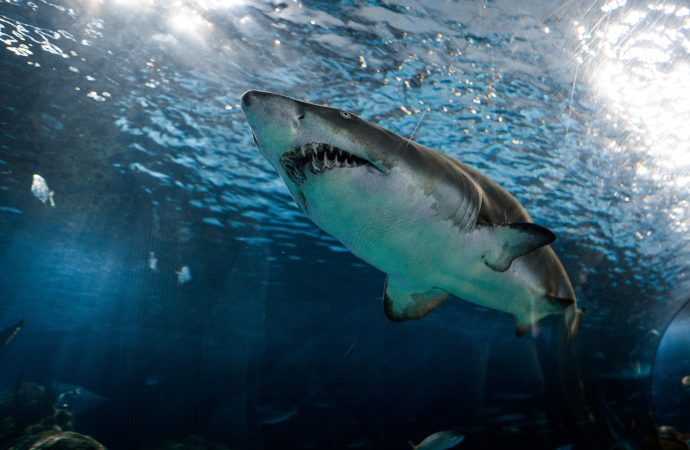Introduction: In the vast expanse of the ocean, where cold waters prevail, a remarkable group of creatures defies the norms of thermoregulation. Warm-blooded sharks have captivated scientists and researchers with their unique physiological adaptations that enable them to maintain a higher body temperature than their surroundings. Join us as we delve into the fascinating world
Introduction:
In the vast expanse of the ocean, where cold waters prevail, a remarkable group of creatures defies the norms of thermoregulation. Warm-blooded sharks have captivated scientists and researchers with their unique physiological adaptations that enable them to maintain a higher body temperature than their surroundings. Join us as we delve into the fascinating world of warm-blooded sharks and uncover the secrets behind their exceptional thermal abilities.
Traditionally, sharks have been regarded as cold-blooded creatures, relying on their environment to regulate their body temperature. However, recent discoveries have shed light on a subset of sharks that possess the extraordinary ability to generate and regulate their own internal heat. These warm-blooded species, known as regional endotherms, include some of the ocean’s most powerful predators, such as the great white shark and the mako shark.
The key to the warm-blooded physiology of these remarkable sharks lies in their unique adaptations. Unlike cold-blooded animals that have a body temperature that matches their surroundings, warm-blooded sharks maintain a higher core temperature, providing them with numerous advantages in their marine environment.
One of the defining features of warm-blooded sharks is their efficient heat exchange system called the rete mirabile, which translates to “wonderful net” in Latin. This intricate network of blood vessels allows the sharks to retain heat generated by their muscles and metabolism. As warm arterial blood flows past cold venous blood, heat is transferred, minimizing heat loss and maintaining a higher internal temperature.
In addition to the rete mirabile, warm-blooded sharks possess a thick layer of insulating fat called blubber. Similar to marine mammals, this blubber acts as a thermal barrier, preventing heat loss to the surrounding water. The combination of the rete mirabile and blubber ensures that warm-blooded sharks can maintain their elevated body temperature even in the colder depths of the ocean.
The ability to generate and retain heat provides warm-blooded sharks with several advantages. It enhances their metabolism and overall physiological performance, allowing them to swim faster, react more quickly, and maintain agility during hunts. This advantage is particularly significant in cold environments where other predators may experience sluggishness due to the low temperatures.
Furthermore, the warm-blooded physiology of these sharks enables them to explore a wider range of habitats and undertake extensive migrations. By maintaining a higher body temperature, they can venture into colder waters that would otherwise be inhospitable to their cold-blooded counterparts. This adaptability enhances their ability to find prey, evade predators, and occupy diverse ecological niches.
The study of warm-blooded sharks has opened new avenues for scientific research and conservation efforts. Researchers employ innovative techniques to study the thermal biology of these fascinating creatures. Satellite tagging, acoustic telemetry, and biologging devices provide valuable insights into their diving patterns, habitat preferences, and behavior, aiding in conservation strategies and habitat management.
Understanding the physiology of warm-blooded sharks also offers potential applications in human biomedicine. Their unique adaptations may provide valuable insights into thermoregulation, heat exchange mechanisms, and metabolic adaptations that could have implications for the treatment of hypothermia and other temperature-related conditions in humans.
While warm-blooded sharks continue to fascinate scientists and the public alike, they face numerous challenges in their marine ecosystems. Overfishing, habitat degradation, and climate change pose significant threats to these apex predators. Conservation efforts, such as the establishment of marine protected areas, sustainable fisheries management, and public awareness campaigns, are essential to ensure the long-term survival of these extraordinary creatures and the delicate balance of the oceanic food web.
In conclusion, the discovery of warm-blooded sharks

















Leave a Comment
Your email address will not be published. Required fields are marked with *